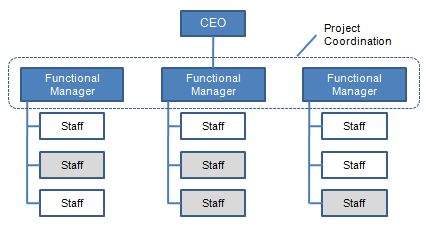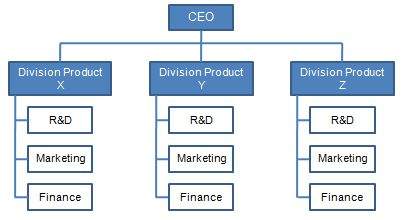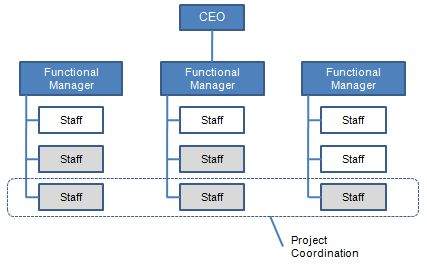Register now or log in to join your professional community.

There are three types of bureaucratic structures:
1 - Pre-bureaucratic structures
This type of organizations lacks the standards. Usually this type of structure can be observed in small scale, start-up companies. Usually the structure is centralized and there is only one key decision maker.
2 - Bureaucratic structures
These structures have a certain degree of standardization. When the organizations grow complex and large, bureaucratic structures are required for management. These structures are quite suitable for tall organizations.
3 - Post-bureaucratic Structures
The organizations that follow post-bureaucratic structures still inherit the strict hierarchies, but open to more modern ideas and methodologies.
Functional structures appear to be successful in large organization

Divisional Structure
These types of organizations divide the functional areas of the organization to divisions. Each division is equipped with its own resources in order to function independently.

Matrix Structure
When it comes to matrix structure, the organization places the employees based on the function and the product.
The matrix structure gives the best of the both worlds of functional and divisional structures.

http://www.tutorialspoint.com/management_concepts/organizational_structures.htm

I'm Agree With All Expert Beautiful Answers


Bureaucratic controls stem from lines of authority and this authority comes with one's position in the organizational hierarchy. The higher up the chain of command, the more an individual will have authority to dictate policies and procedures. Bureaucratic controls have gotten a bad name and often rightfully so. Organizations placing too much reliance on chain of command authority relationships inhibit flexibility to deal with unexpected events. However, there are ways managers can build flexibility into policies and procedures that make bureaucracies as flexible and able to quickly respond to customer problems as any other form of organizational control.

I like Ms Bonnie Cheryl Nel's post ... it is very detailed and I have nothing to add .....

Agreed to the experts............................................

Agree with all answers
-------------------------------
Thanks

I agreed with the expert answers, specifically, Ms. Bonnie.


I support all the answers specially the answer of Bonnie Cheryl Nel of the three types of bureaucratic structures. Thanks.

most of us answered buraeucratic structures and not control!
Bureaucratic Control of an organization and the individuals that make up the organization through systems of standardized rules, methods, and verification procedures. Bureaucratic control is used to ensure efficient operation of large organizations, where face-to-face communication is not possible or practical and informal methods of enforcing compliance may not be sufficient.





Do you need help in adding the right keywords to your CV? Let our CV writing experts help you.